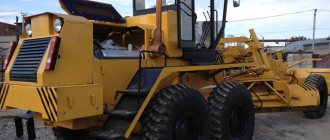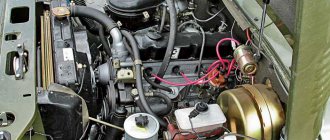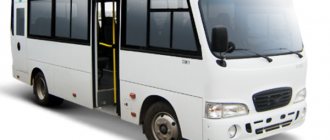For a long time it was believed that low-floor buses were only good for large cities, especially megalopolises. Therefore, large and especially large low-floor machines were designed and produced everywhere.
However, in Russia there are many medium-sized cities where passenger traffic is small, the streets are narrow, and experience in operating large buses has shown that this is unprofitable.
And time dictates its own laws: citizens want to see low-floor vehicles in such cities. This is very convenient, first of all, for people with limited mobility: for parents with strollers, for those carrying heavy luggage, for the disabled and the sick.
Design and versions
The appearance is not much different from other models of the Russian company. All body elements are in LiAZ style. The Cursor looks harmonious and modern, and at first glance it is not inferior even to its European counterparts, however, many easily confuse it with buses from Chinese manufacturers.
The front looks very neat. This is facilitated by a huge panoramic windshield, which occupies most of the body at the front. Below it is the company logo and a chrome trim. In the corners there are slanting optics with complex filling, and round fog lights are visible under them. On the right side, there is a huge side rear view mirror in the front.
In profile, the bus is unremarkable, with attractive wheel arches, a large glass area and transparent doors.
At the rear, you can highlight huge vertically oriented lights and round fog lights and turn signal indicators located at all four corners of the bus. Almost the entire area of the rear of the bus is covered with a metal false radiator grille. A large number of air intakes can also be seen on its side end.
Dimensions:
- length – 9.5 meters;
- width – 2.5 meters;
- height – 2990 mm (including air conditioning);
- The mass of the bus is 9020 kg; it can be loaded up to 14,400 kg.
The bus is available in two versions:
- city version - 3-door version, accommodating up to 82 people. Of these, there are 24 seats.
- country version - a 2-door version with seating for 28 people, however, it can accommodate from 68 to 75 people.
Buy LiAZ 4292
Currently you can buy one of two modifications:
- completely low-floor with three doors and the most comfortable seating for passengers, including those with limited mobility. There are only 24 seats, but the total capacity is 82 people. For urban transport;
- partially low-floor commuter bus with two doors, 28 seats or 75 including standing.
Both modifications bear the index 4292 60.
Salon
The driver's seat is equipped at the highest level. In front of it is a simple 4-spoke steering wheel, followed by a state-of-the-art instrument panel that integrates a color trip computer. Engineers have seriously worked on the ergonomics of the cabin and added a huge amount of useful functionality, however, many drivers are not satisfied with the location of the gearshift knob, which regularly comes into contact with the knee.
Separately, we note the driver’s seat with a wide range of adjustments, optimal filling and lateral support that is pronounced by bus standards. The driver has a good view in all directions, and a surveillance system for viewing the entrance doors has also been thought out.
Specifications
| Engine model | YaMZ-53403 |
| Type | Diesel |
| Environmental class | Euro 5 |
| Volume | 4.43 l |
| Number of cylinders | 4 |
| Maximum power | 210 hp at 2300 rpm |
| Torque | 780 H*m at 1200-1600 rpm |
| Transmission | Automatic transmission ZF 6AP-1000B or Allison Т2100 |
| Maximum speed | 85 km/h |
| Brake system | Pneumatic, dual-circuit, with ABS and ASR |
| Steering gear | ZF, Servocom 8095 with hydraulic booster |
The bus is equipped with a YaMZ-53403 engine. This is an in-line 4-cylinder engine running on “heavy” fuel. Its working volume is 4.4 liters. This is a modern engine, which is equipped with a Common Rail system and a turbocharger. Liquid cooling. The introduction of new technologies allows the engine to pass Euro-5 environmental standards.
The maximum power of the YaMZ-53403 engine is 210 hp, and the maximum torque is 780 Nm. It works in tandem with two automatic transmissions to choose from: ZF and Allison. Both of these boxes transmit all torque to the rear axle. "Mechanics" is not yet available.
The maximum speed of the nine-ton bus is 85 km/h.
The car has a fully dependent suspension. It is also equipped with pneumatic cylinders to increase ground clearance when passing difficult sections of the road.
The braking system has a dual-circuit center and a full disc system on all wheels. The steering boasts a hydraulic booster.
Liaz 4292: technical characteristics, fuel consumption, photo of the bus body and interior
The first in its class domestic low-floor 9.5-meter bus, full of advanced technical innovations, will soon hit routes throughout the country. We were able to try it out
LIAZ-429260 (GAZ 9.5). Overall length: 9.5 m. Start of sales: 2016 Price: from RUB 7,500,000.
The degree of unification of the body (load-bearing frame, glazing, interior trim, roof elements) with large-class LiAZ models is about 60%
Until recently, it was believed that the element of a low-floor bus was a metropolis with a developed road infrastructure and consistently high passenger traffic. That is why the era of low-floor cars, where access to the cabin is significantly simplified, began with cars of the large and especially large classes.
Meanwhile, in small towns with narrow streets, short routes and unstable passenger flow, the operation of large equipment does not justify itself. In this case, it is more profitable for the carrier to have two nimble and maneuverable small buses than one that is spacious, but requires more expensive maintenance. However, solutions to make it easier for passengers to enter and exit, including tilting the body towards the doors, are certainly becoming increasingly important. It is not surprising that there is a demand on the market for low-floor buses of medium and even small classes.
Recently, this niche has been filled by products of the Minsk Automobile Plant (MAZ-206) and the Pavlovsk Bus Plant (PAZ-3237). We also sold Ukrainian Bogdan A302 with a partially low floor. But only the MAZ-206 was a completely low-floor vehicle that allowed you to move freely along the entire length of the cabin without steps.
It seems that GAZ Group has decided to seriously address this problem. The 10.5-meter LiAZ-52926 served as a test balloon. Developed by order of the State Unitary Enterprise Mostransavto, it entered the assembly line of the Likinsky Bus Plant in 2014. Then, at the end of last year, the GAZ Group’s production program was supplemented by the 9.5-meter LiAZ-429260 (according to the new GAZ 9.5 brand book), positioned as the first completely low-floor middle-class bus of Russian production. For reference: in accordance with the Federal Law on the Organization of Regular Transportation of Passengers by Road (No. 220-FZ), the middle class includes vehicles with a length of 7.5 to 10 m inclusive.
The driver's workplace is made in accordance with the European EBSF standard
The prototype of the middle class LiAZ was first presented to the general public at the World of Buses festival in Kolomna. And for the COMTRANS 2015 cargo show, the designers prepared a significantly improved version. It was this car that we recently met in Likino-Dulevo.
You can check the serviceability of the bus and find out the mileage before maintenance using the multifunction display
ON THE PATH OF RATIONALITY
So, LiAZ-429260. The car, with a design and layout seemingly familiar to Likino buses, turned out to be quite original upon closer acquaintance. The appearance, the component base, and the interior layout have undergone serious updates. If in the prototype a certain originality of the front mask was considered only as a search solution for restyling, then in the final form the exterior was radically transformed - the bus received a high windshield, original head optics and new rear lights.
Implementing the project, as they say, from scratch, the designers tried to incorporate the highest possible technological level into the new machine. The bus, shortened to 9.5 m, differs from the “big brothers” in its unit base: it is equipped with a lighter front independent suspension ZF RL-55, a 4‑cylinder diesel engine YaMZ-534030 (210 hp, Euro-5 with EGR technology), automatic transmission Allison T211 or ZF 6 AP-1000B and portal drive axle ZF AV-110. The use of units designed for a lower gross weight can significantly reduce both the initial cost of the bus and further operating costs, the manufacturer believes. Indeed, the in-line “four” will still be less voracious than its 6-cylinder counterpart. But there are also volumes of technical fluids that also cost money. The layout of the engine compartment is unified with that of commuter buses: the radiator is located transversely at the same level as the engine. This decision is also dictated by economic considerations: the absence of a massive bevel gear reduces the cost of the machine and simplifies its maintenance.
The cabin can accommodate up to 23 seats
Two modifications of the LiAZ-429260 will be offered on the market: a completely low-floor urban and a partially low-floor suburban (LiAZ-429260‑01). The urban version has three doors. With a total capacity of up to 75 passengers, it provides from 19 to 23 seats, plus an area for a passenger in a wheelchair. The detailed elaboration of the interior layout is visible to the naked eye. For example, the middle passenger door was moved towards the rear of the bus, freeing up additional interior space for standing places, and the front platform seats were deprived of podiums - this is how the designers listened to the wishes of older people. At the same time, the degree of unification of the body (power frame, glazing, interior trim, roof elements) with large-class LiAZ models is about 60%.
The list of innovations is complemented by the driver's workplace - it is made in accordance with the European standard EBSF (European Bus System of the Future). This complex abbreviation provides for the same arrangement of controls (dashboard keys, steering column switches, parking brake valve, etc.) and compliance with all ergonomic rules: standard methods for adjusting the seat, mirrors and steering column. There is no point in describing in detail all the amenities for the crew, since the same thing can be seen if you find yourself behind the wheel of any modern European low-floor vehicle. In Europe, this is done so that the driver, having transferred to a bus of a different brand, gets used to it as quickly as possible. But we don’t yet have such mandatory requirements, so GAZ Group is proactive in this sense.
The front platform seats are installed without podiums and are equipped with armrests
UPGRADE PROVIDED
As a mandatory addition to the new command post, the bus received a multiplex electrical system. The channel for exchanging information between on-board electronic systems is the CAN bus - all final recipients are registered in a single control network, starting with the electronic components of the chassis and ending with the lighting system, control of mirrors and windshield wipers. Compared to the previous analogue system (it is offered as a basic option for the commuter version of the bus), the multiplex reduces the number of electrical wiring harnesses by 2.5 times. It is possible to implement many additional functions (cruise control, rain sensor, automatic light switching, adjusting the interval of brush movement, etc.) without changing the architecture.
A folding ramp and a tilt of the body towards the doors simplify access to the cabin for passengers with limited mobility
Another advantage of the multiplex is the possibility of accelerated diagnostics - a complete picture of the technical condition of the machine can be obtained within a few minutes. The solutions implemented in the new LiAZ provide not only automatic transmission of data about the bus while on the route (speed, location, fuel consumption, images from on-board video cameras, etc.), but also remote diagnostics of all systems with data transfer to the technical park service or control room. The driver himself can always check the serviceability of the bus and find out the mileage until the next maintenance (service interval is 30,000 km) - this is made possible by the multifunctional display located to the right of the dashboard.
The engine compartment is unified with commuter buses
It is logical to ask the question: are carriers in the regions ready to work with equipment of such a high level? At LiAZ they don’t see any problems in this. “There will be no issues with repairs - we will train the staff, we will provide the equipment,” says Vyacheslav Orekhov, director of the promotion department for LiAZ buses at Russian Buses - GAZ Group LLC. In the future, the company plans to offer buses with a service contract on the market. “The carrier must provide services to passengers,” explains Vyacheslav Orekhov. — Everything else, including the technical readiness of the rolling stock, is the responsibility of the supplier or the company with which the contract was concluded. Electronic monitoring tools implemented in LiAZ-429260 fit organically into this concept.”
The use of 5 units designed for a lower gross weight allows you to significantly reduce both the initial cost of the bus and further operating costs
Briefly about the sensations behind the wheel. I liked the handling of the car. The minimum turning radius of 8.9 m is a consequence of the use of independent suspension. I remember that a bus with a conventional front axle needed much more room to maneuver.
One of the noticed disadvantages is the poor location of the right mirror: the view is distorted by the cabin partition shifted towards the windshield. However, the designers are aware of the problem and promise that commercial vehicles will have a different bracket. In general, we can only hope that the new bus will gain popularity, being competitive not only in terms of characteristics, but also in price, which for the city version with three doors starts at 7.5 million rubles.
The front independent suspension provides not only improved ride comfort, but also maneuverability
- High maneuverability, low operating costs, simplified access to the interior
- Poor placement of the rear view mirror
| Specifications | |
| Number of seats | 23 |
| Curb weight, kg | 13 150 |
| Total weight, kg | 8000 |
| Dimensions (length/width/height), mm | 9500/2500/2880 |
| Wheelbase, mm | 4500 |
| Fuel tank volume, l | 180 |
| Engine | |
| model | YaMZ-5340300, Euro-5 |
| type | diesel, in-line, 4-cylinder |
| working volume, l | 4,43 |
| power, hp | 210 at 2300 min-1 |
| torque, Nm | 730 at 1300-1600 min-1 |
| Transmission | Allison T211 or ZF 6 AP-1000B |
| Suspension | |
| front | independent, pneumatic |
| back | dependent pneumatic |
| Brakes | disk |
| Tires | 265/70R19.5 |
| Service | |
| Factory warranty | 18 months or 100,000 km |
| Service mileage | 30,000 km |
| Price | |
| Basic/test bus | RUB 7,500,000 |
| Competitors | |
| PAZ-3237, MAZ-206 | |











